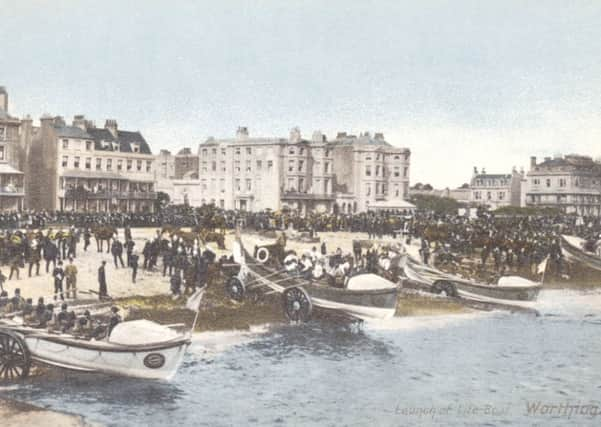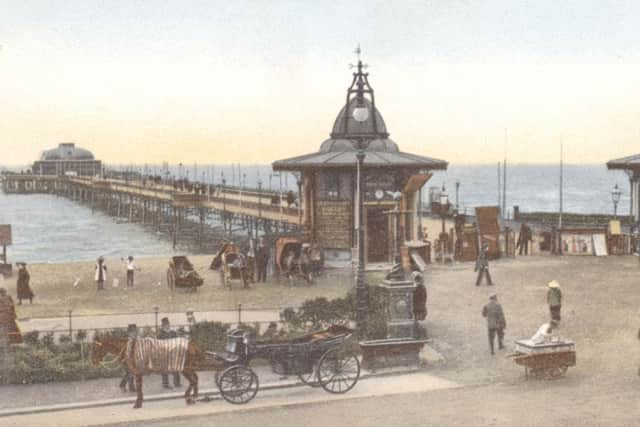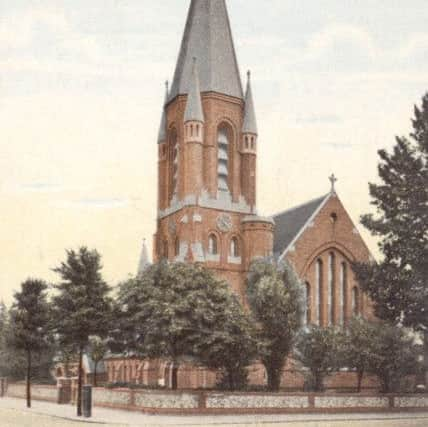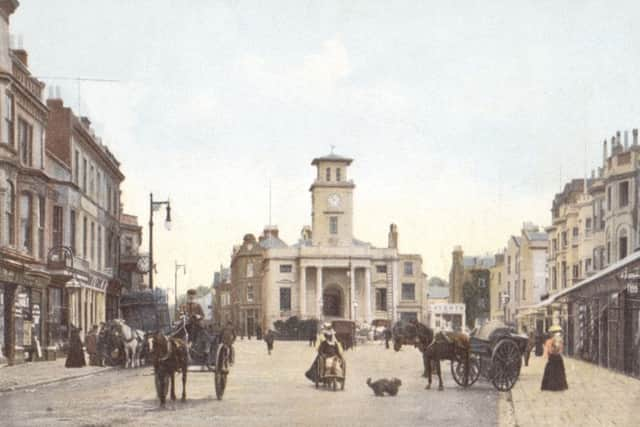A really very big Wrench indeed


One example from the Edwardian era is the firm that used the publisher-credit “The Wrench Series” and the trademark of a wrench inside an oval – both of which are visible, upside down, at the top of the message-side of the postcard at the bottom of the right-hand page.
The firm’s founder was a young man of exceptional initiative called Evelyn Wrench, who was born in 1882 in County Fermanagh, into a prominent Ulster family, and educated at Eton.
Advertisement
Hide AdAdvertisement
Hide AdAfter he left school, at the age of 17, he spent a number of months on the continent of Europe.


One day he was writing postcards to some of his friends when he was struck by how well produced German postcards were compared to those sold in England.
He then reflected that he must have sent at least two hundred picture postcards in the previous eight months.
Sensing a business opportunity, he made enquiries; and he discovered that in Saxony he could have 25,000 postcards printed for 13s 6d per thousand (about £60 today).
Advertisement
Hide AdAdvertisement
Hide AdSo he put arrangements in place, and returned to London, where he chose the photographs for his first 25 postcards, and sent them off to Germany to be printed. His first order arrived back at the end of November, 1900.


Wrench’s entry into the postcard business was perfectly timed.
Early postcards had been smaller and almost square in shape; and it was only a year earlier, on November 1, 1899, that the British Post Office had approved the 5.5 x 3.5 inch size of card for postal use.
It was partly as the result of this change that the sending of picture postcards soon developed almost into a national obsession.
Advertisement
Hide AdAdvertisement
Hide AdWrench’s company grew at phenomenal speed. Within three years, the firm was one of the largest postcard publishers in Britain. It had more than 100 employees, and was producing three million cards a month.


Sadly, however, it had over-reached itself. Too much capital was tied up in its stock, and the income was inadequate to support the firm’s debts.
In 1904, the company went into receivership and Wrench left the firm. It continued for two years under new management, but the financial situation proved beyond remedy, and the firm closed in 1906.
When he left the company that bore his name, Wrench was still only about 21 – and his remarkable career was only just beginning.
Advertisement
Hide AdAdvertisement
Hide AdHis talent and enthusiasm had brought him to the attention of Alfred Harmsworth – later Lord Northcliffe – the great newspaper proprietor, and in 1904 Harmsworth asked Wrench to join his staff. Soon afterwards, he was appointed editor of the Overseas Daily Mail.
From 1910 onwards, Wrench devoted much of his energy to the British Empire. In that year he formed the Royal Overseas League, and during his lifetime he travelled some 64,000 miles, visiting most of the countries of the Empire.
During the First World War, he joined the Royal Flying Corps, rising to the rank of major; and after the war he founded the English-Speaking Union.
In 1925, Wrench became the proprietor and the editor of The Spectator, then, as now, Britain’s leading right-of-centre political and cultural weekly; and he was knighted in 1932.
Advertisement
Hide AdAdvertisement
Hide AdAmong Wrench’s more unusual projects was the setting up, during the Second World War, of the Sir Evelyn Wrench Tobacco Fund to provide money for members of the Allied Forces to buy tobacco.
Wrench died in 1966, more than 60 years after his youthful postcard enterprise had gone bankrupt.
I have a couple of dozen Wrench Series cards of the Worthing area in my collection.
The earliest postmark on any of them is October 1, 1904, and – while this of course does not prove that the Wrench firm became active in Worthing only about that time – my suspicion is that the firm arrived in the town fairly late in its short existence.
Advertisement
Hide AdAdvertisement
Hide AdAbout half of my Wrench Series cards are black-and-white and about half are colour-tinted.
However, those that illustrate this article are all in colour, since they make a more attractive display.
As far as I know, Wrench did not use his own photographers. He was in the business of postcard production and distribution, not photography.
At the firm’s peak, Wrench employed 12 “travellers”, and their role was probably twofold – first, to make contact with local photographic firms in order to source suitable views; and then, once the postcards had been printed, to ensure that they were widely stocked in the town in question.
Advertisement
Hide AdAdvertisement
Hide AdCertainly the photograph of the lifeboats on East Parade was “bought in”, since the picture was taken a decade earlier, during a lifeboat demonstration held in Worthing on August 22, 1894.
There were two races, each involving the Worthing, Littlehampton, Shoreham and Brighton life-boats.
The first was a rowing-race, and the second was meant to be a sailing-race, but, as the Worthing Gazette reported: “in the absence of the necessary breeze, the oars had to be resorted to after a part of the course had been completed”.
Both races were won by the Worthing lifeboat, and in both races Brighton came last.
Advertisement
Hide AdAdvertisement
Hide AdThe inadvisability of using a postmark or a date written on a postcard to try to establish when a particular card was first printed is demonstrated in a card of Cross Lane, Findon.
The message on the card is dated September 8, 1948, but – since the Wrench firm closed in 1906 – the card must have been sitting in someone’s desk drawer for over 40 years.
Dorothy’s message also alerts us to the importance of starting a new paragraph when there is an abrupt change of subject-matter. Her first paragraph ends with a jolting non-sequitur: “We like it here and had chicken for dinner on Sunday. Their friend died last week.”
To judge from her careful handwriting and the style in which she writes, Dorothy was probably in her early teens – so we should make allowances, and not be too harsh on her for her unsettling juxtaposition of the trivial and the grave.
• Antony Edmonds is the author of Worthing: The Postcard Collection (Amberley, 2013).